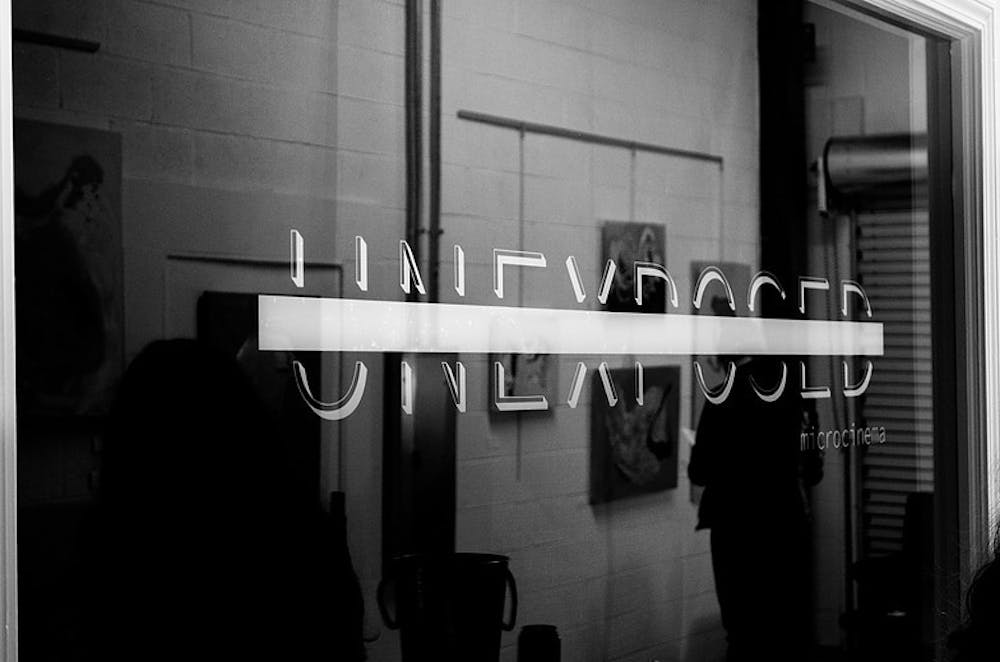As a person who loves movie theaters and the atmosphere that they can cultivate, I find myself griping about the lack of engaging cinemas within the Triangle Area often. The Rialto Theatre in Raleigh and the Carolina Theatre in Durham each offer distinctive arthouse theater-going experiences, but I can’t help but notice a dearth in the number of cinemas that offer immersive viewings of movies.
So when my film professor notified his students that Bill Brown, a filmmaker and former Duke professor, was bringing his 16mm short films to the UNEXPOSED Microcinema, it piqued my curiosity. Microcinemas are typically little theaters or screening rooms that emphasize works made mostly by small-time filmmakers on a small-time budgets. In terms that Durham hipsters can relate to, they’re cinematic microbreweries–ironic, given that UNEXPOSED is located down the street from an independently-owned brewery.
Crammed into that tiny screening room is a communal viewing experience of movies that wouldn’t normally make the silver screen’s cut. Tucked in a seedier part of downtown Durham’s sprawl, UNEXPOSED is essentially a cement-walled room dotted with a few dozen foldable chairs. The interior lacks climate control (be prepared to sweat in the summer and shiver in the winter) and the exterior is sketchy, but there’s also something strangely charming about the space. Perhaps it’s the quiet hum of the film projector or the faint scent of beer and marijuana that hangs in the air, but the microcinema is magnetic and spirited. You’d feel cool if you told to someone that you spent a night out there.
UNEXPOSED has a niche pull–the space is mostly occupied by Duke’s experimental and documentary arts MFA students (and whichever fortunate friends they decided to drag along). In fact, the MFA students programmed the screening of Brown’s films with enthusiastic support from the owners of the microcinema. Brown is a revered figure around documentary and experimental film enthusiasts. Jeremy Smyth, one of the twin brothers who owns UNEXPOSED, admitted that Brown is “40 percent of the reason” that he and his brother decided to move to Durham to establish their microcinema.
After leaving Duke, Brown decided to take his talents down Tobacco Road to teach at UNC, but the invitation to screen his films last Sunday and mingle with the current MFA students was hard to turn down. Of his wide-ranging filmography, Brown decided to show two of his films that hold a special salience in light of the recent election. “Confederation Park,” made in 1999, explores America’s northern border with Canada, while his 2006 film “The Other Side” probes America’s southern border with Mexico.
Brown primarily creates short, personal films that are both documentaries and essays. His peculiar, lilting voice narrates shots of whichever city or landscape he’s exploring, softly dispensing philosophical musings that may directly parallel his subject or not. These verbal mediations are especially apparent in “Confederation Park,” as Brown makes connections between the Québécoise separatist movement and the divisions that are apparent in his own mind. He can’t quite formulate a judgement on what he’s studying—the uncertainty apparent in his voice.
In “The Other Side,” Brown makes his intentions clearer: it’s a more forceful and critical study of the border, examining its shifting politics and geography through compelling observations.
“It’s a film that I wish dearly would make us nostalgic or kind of regret a certain kind of relationship we had to the border,” Brown told the crowd in a short speech before the screening. “It doesn’t seem like that’s the case.”
By speaking to undocumented immigrants who made the treacherous trek across the border and activists who offer whatever modicum of help that they can for those individuals, Brown lays bare the hypocrisy of America’s attempts to paint undocumented immigrants as criminal or threatening. Who’s the real criminal, he muses: the person trying to make ends meet for their family or the government that relentlessly pushes crossing undocumented immigrants into the perilous throes of the desert?
Blurring the line between documentary and personal filmmaking, Brown’s films are vignettes of the North American landscape, and its tenacious changes and continuities. The small insights into Brown’s head also make his movies privy to the human psyche, an intimacy that’s easily reflected in the atmosphere of the UNEXPOSED Microcinema. Arena and medium go hand-in-hand like old friends, creating a cinematic experience that’s both familiar and curious.
Get The Chronicle straight to your inbox
Signup for our weekly newsletter. Cancel at any time.

